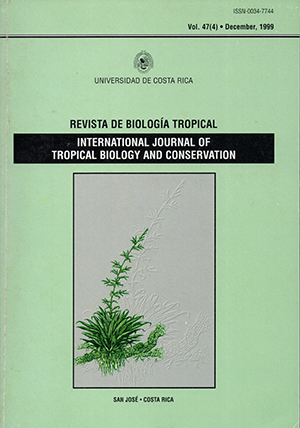Abstract
The plankton communities and environmental factors of the Ignacio Allende reservoir were surveyed from July 1990 to June 1991. A total of 57 phytoplankton species were identified. There was a blue green algae bloom in the summer, simultaneously with highest water levels, followed by the dominance of diatoms in the coldest months (February and March). Chlorophyceans became dominant in the spring, consonant with highest temperature records. Bacillariophyceans and cyanophyceans had the greater species riehness, while dinophyceans and euglenophyceans had the lowest values. The summer bloom of Anabaena variabilis and the abundance of Ceratium hirundinella, Aulacosseira granulata and Fragilaria crotonensis are associated with tropical eutrophic waters. The zooplankton was composed by 39 species, from these, Diaphanosoma birg,ei, Bosmina longirostris, Daphnia parvula, Diaptomus (Mastigodiaptomus) montezumae, Acanthocyclops vernalis, Keratella cochlearis, Polyanhra vulgaris and Asplc.nchna priodonta occurred throughout the annual cyc\e. A canonical correspondence analysis showed a succesional pattern associated to several environmental processes. The lowest species richness occurred during the dry season, in the coldest months. In the wet season, species richness increased and population densities decreased, consonant with the blue-green a1gae bloom, the highest values of suspended solids and the highest water levels in the reservoir.##plugins.facebook.comentarios##

This work is licensed under a Creative Commons Attribution 4.0 International License.
Copyright (c) 1999 Revista de Biología Tropical
Downloads
Download data is not yet available.






